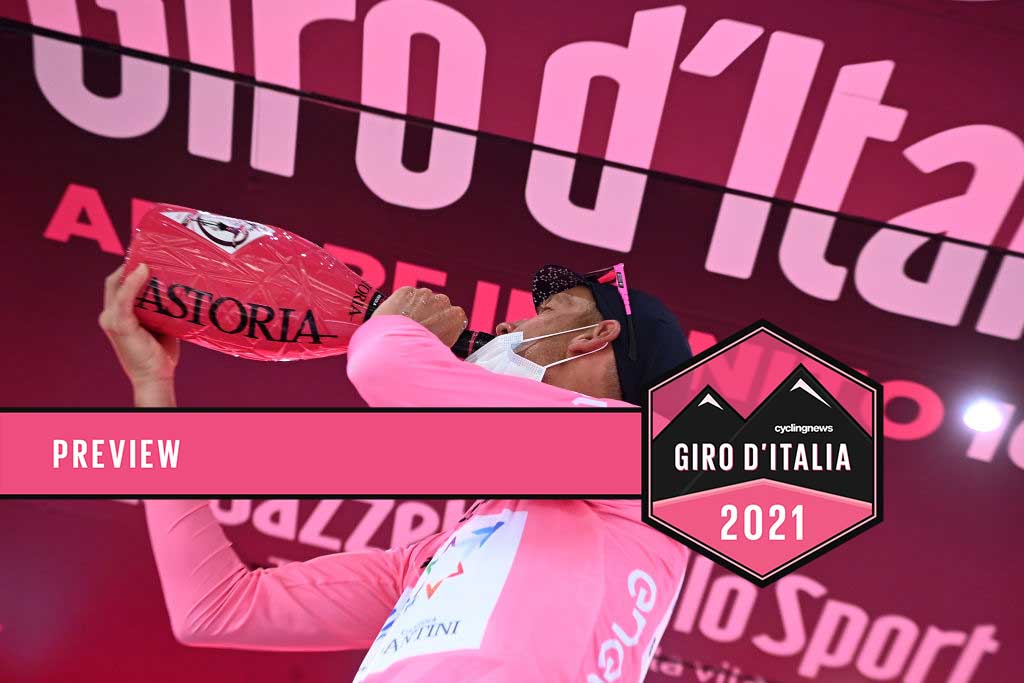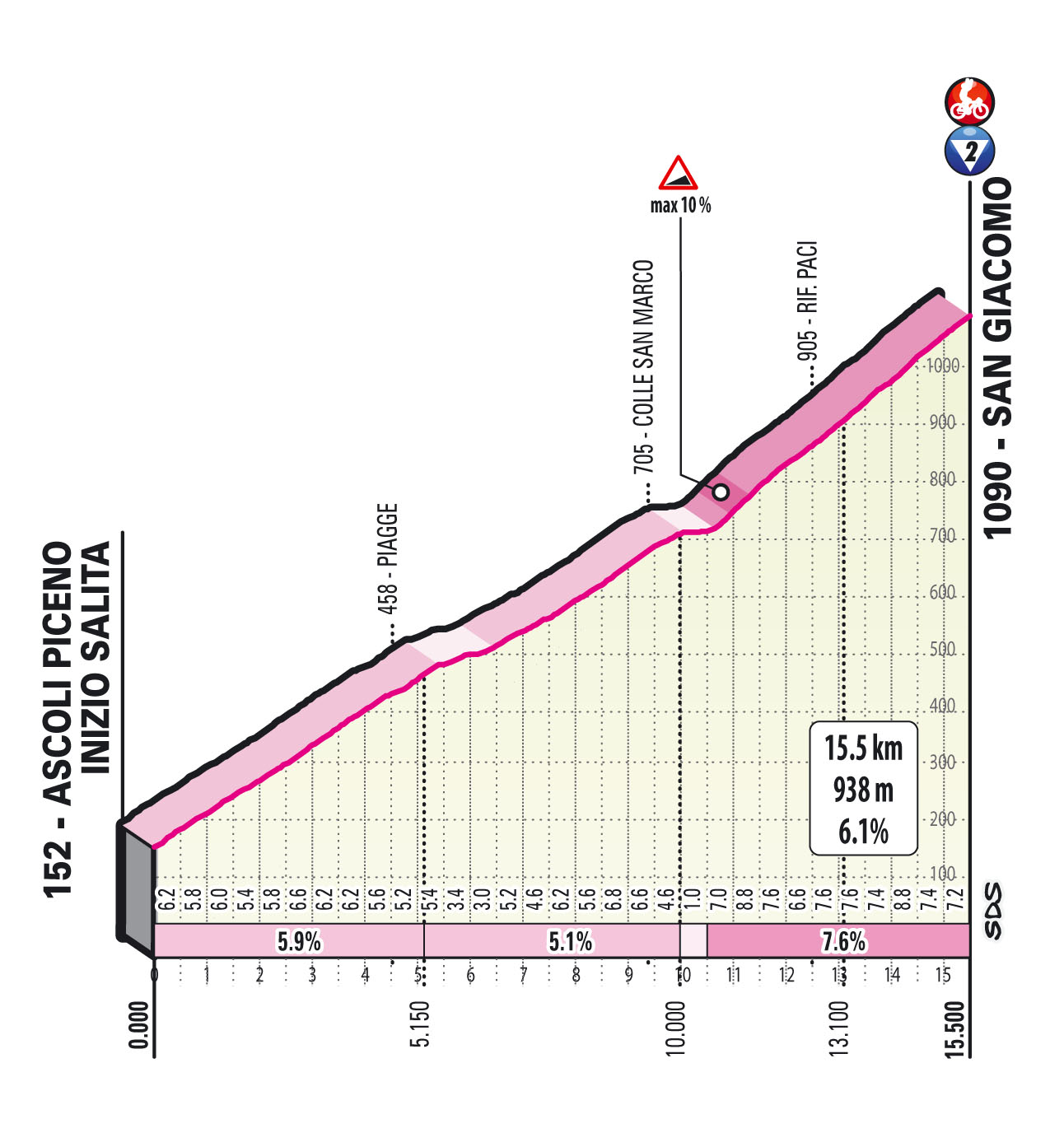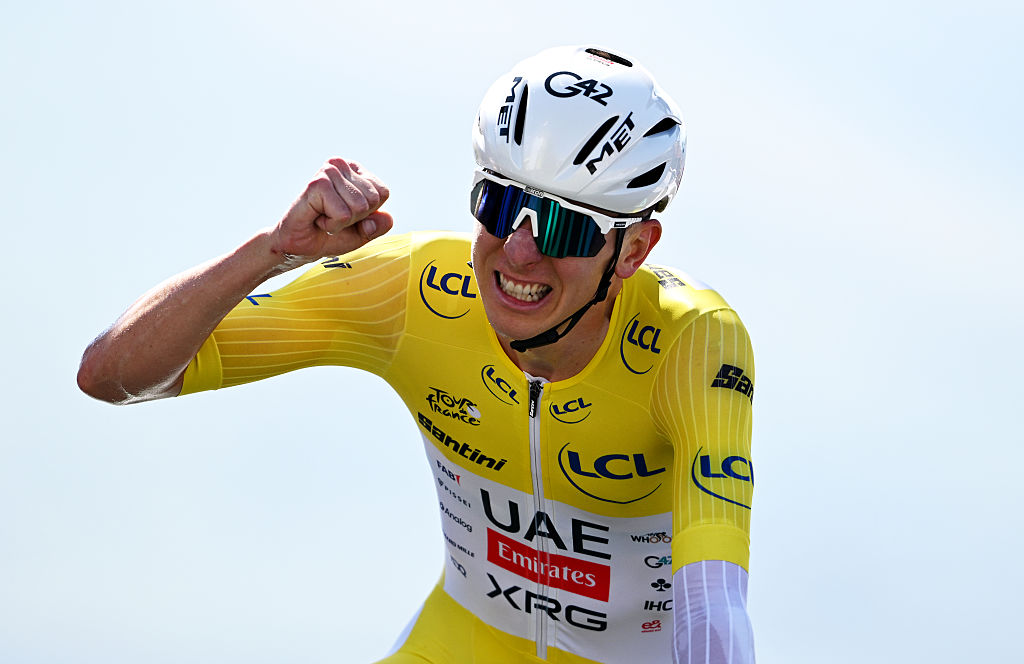Preview: First summit finish of Giro d'Italia to shed further light on early impressions
'It's not steep but it all depends on how people race up it' says Caruso

Sometimes in the Giro d'Italia, the only constant is change. In Modena on Wednesday morning, Joe Dombrowski was very tentatively allowing himself to imagine trying to divest Alessandro De Marchi of the pink jersey on the summit finish at San Giacomo the following day. "It's not hard hard, but it's tough enough to make a selection, so if De Marchi is dropped, I could try," he said as he went to sign on.
A few minutes earlier, Damiano Caruso had stood in the same spot and been asked to contemplate what his Bahrain Victorious leader Mikel Landa, so impressive at Sestola, might achieve on Thursday's finale above Ascoli Piceno. "It's the first real summit finish," he said. "It's true that there aren't double-digit gradients on the climb, but it all depends on how people race up it."
It's already clear that it will be raced without Landa, whose Giro ended in distressing circumstances when he came down heavily in a crash on the run-in to Cattolica on Wednesday afternoon. It's also evident that Dombrowski, who lost eight minutes in the same crash, will not take the maglia rosa. Ineos Grenadiers, meanwhile, will now race with just one leader in Egan Bernal, after Pavel Sivakov lost 13 minutes in a separate crash on stage 5 and abandoned the race.
Yet while some of the dynamics of the Giro were changed by that fraught approach to Cattolica, the premise and intrigue of stage 6 from Grotte di Frasassi to Ascoli Piceno remains unchanged. The final climb to San Giacomo is long but its slopes are relatively gentle. The ascent and the rugged fare that come before it are clearly demanding enough to force a significant selection, but it remains to be seen if the final ramps are sufficiently steep to trigger the kind of accelerations that splintered the group of favourites on the Colle Passerino on stage 4.
"That wasn't a stage where you could tell a lot, but tomorrow is different," Ineos directeur sportif Matteo Tosatto told Cyclingnews in Cattolica on Wednesday. "We'll see a bit more tomorrow, I think.
"It depends on who takes the race in hand. It's a long climb, 15 kilometres, and the last five are the toughest, so somebody could do something, but we'll see."
The road to San Giacomo

Stage 6 sets off from above the Grotte di Frasassi, the striking karst cave system near Genga. The road rolls relatively gently over the opening 50km or so, but the ripples on the stage profile calcify into more imposing stalagmites by the midpoint, with the twin ascents of the category 2 Forca di Gualdo and the category 3 Forca di Presta. The former is 10.4km long at a stiff average of 7.4 per cent, while the latter is a far gentler 4.8km at 4.2 per cent.
The latest race content, interviews, features, reviews and expert buying guides, direct to your inbox!
A long descent brings the race from the 100km mark to the provincial capital of Ascoli Piceno, so named for the Picentes, the pre-Roman people that occupied the area. After an intermediate sprint in the centre of town, the gruppo is directed southwards up the Colle San Marco and towards the hilltop village of San Giacomo.
The Giro last came to San Giacomo in 2002, when Julio Perez Cuapio claimed stage victory at the summit ahead of Cadel Evans, though on that occasion the race approached the village from its southern side, tackling a slightly shorter but decidedly sharper ascent from Cesano.
This time out, the Giro climbs briskly in 15km from an altitude of 152 metres in Ascoli to 1090 metres in San Giacomo, but the first two-thirds of the ascent are remarkably even as the road winds up the mountainside in sweeping hairpins.
The gradient flits between 5 and 6 per cent for the first 10km, but after a brief respite at the Colle San Marco, the road kicks upwards towards the finish on a series of more tightly-packed bends. The gradient just about hits double digits here and it averages 7.6 per cent across the last 5km.
Where Tuesday's climb of the Colle Passerino was a short and explosive effort, this is a longer, steadier ascent, where a strong team - Ineos, perhaps - can take matters in hand, depositing riders out the back while dissuading attackers off the front.
Had Landa still been in the race, the Basque would surely have tested his rivals on the upper slopes. In his absence, it will be fascinating to see if Giulio Ciccone (Trek-Segafredo) continues his aggressive start to this Giro and, of course, if Egan Bernal delivers another warning to his rivals like the one he produced at Sestola.
The maglia rosa De Marchi will be expected to stay with the front group as far as the 5km to go marker, but his future in the race lead depends on how close he can finish to men like Astana-Premier Tech's Aleksandr Vlasov (sixth at 1:24) and Remco Evenepoel of Deceuninck-QuickStep (seventh at 1:28) if and when the general classification contenders start to test the waters on the approach to the summit. With rain once again a distinct possibility on Thursday, the climb – and the entire stage – will become several degrees more arduous.
"Out of respect for this jersey, you have to give your maximum," De Marchi said on Wednesday evening in Cattolica. "We'll try to keep it and also do our work for Dan Martin. He's our leader, who deserves and needs our support."
Martin finished with Simon Yates (Team BikeExchange), Evenepoel and Romain Bardet (Team DSM) in the second group of favourites at Sestola, 11 seconds down on Bernal, Hugh Carthy (EF Education-Nippo), Giulio Ciccone (Trek-Segafredo), Vlasov and the unfortunate Landa. Others, like Jai Hindley (Team DSM) and Vincenzo Nibali (Trek-Segafredo) conceded over a half a minute, but the precise hierarchy of this Giro remains nebulous.
The climb to San Giacomo will bring a little more definition even if, as ever in the first week of the Giro, things tend to be written in water rather than set in stone.

Barry Ryan was Head of Features at Cyclingnews. He has covered professional cycling since 2010, reporting from the Tour de France, Giro d’Italia and events from Argentina to Japan. His writing has appeared in The Independent, Procycling and Cycling Plus. He is the author of The Ascent: Sean Kelly, Stephen Roche and the Rise of Irish Cycling’s Golden Generation, published by Gill Books.
